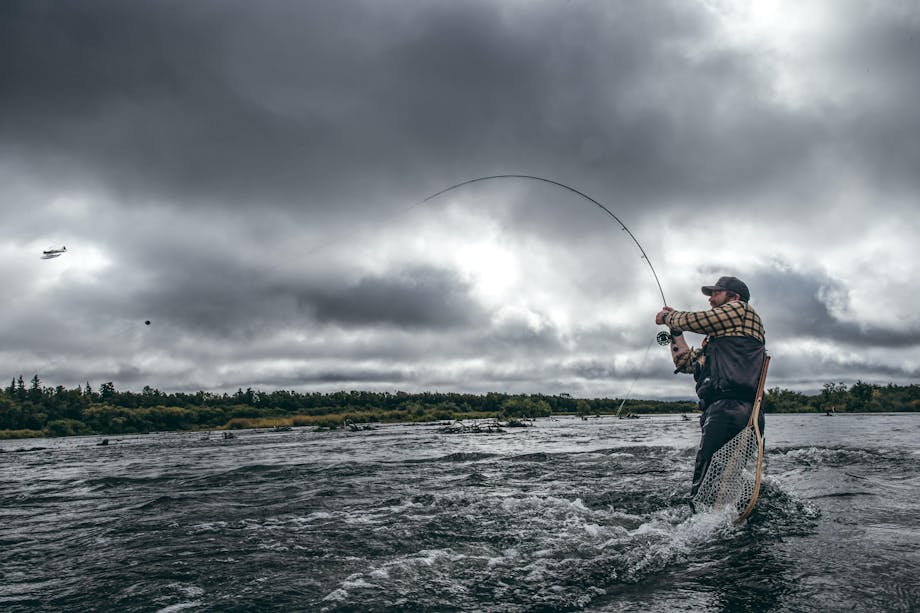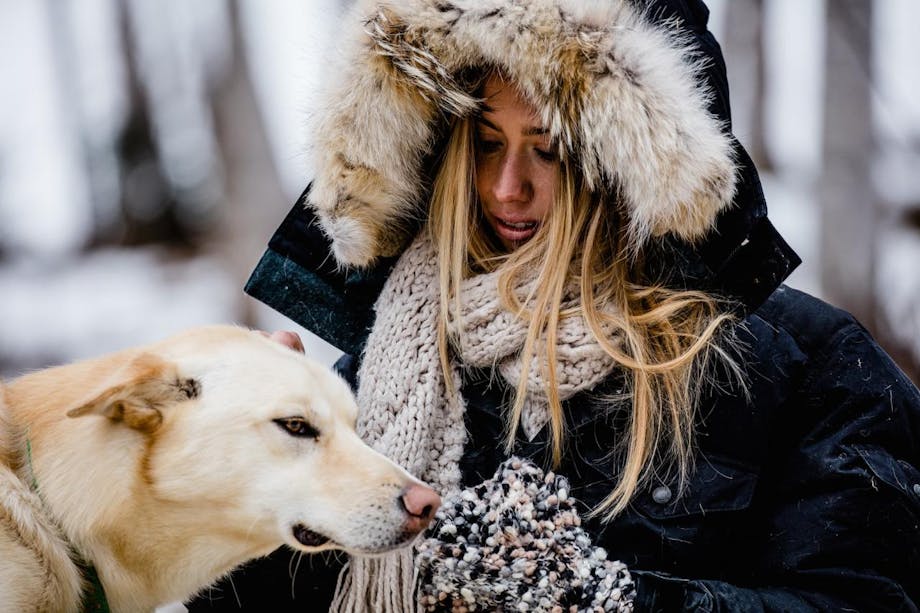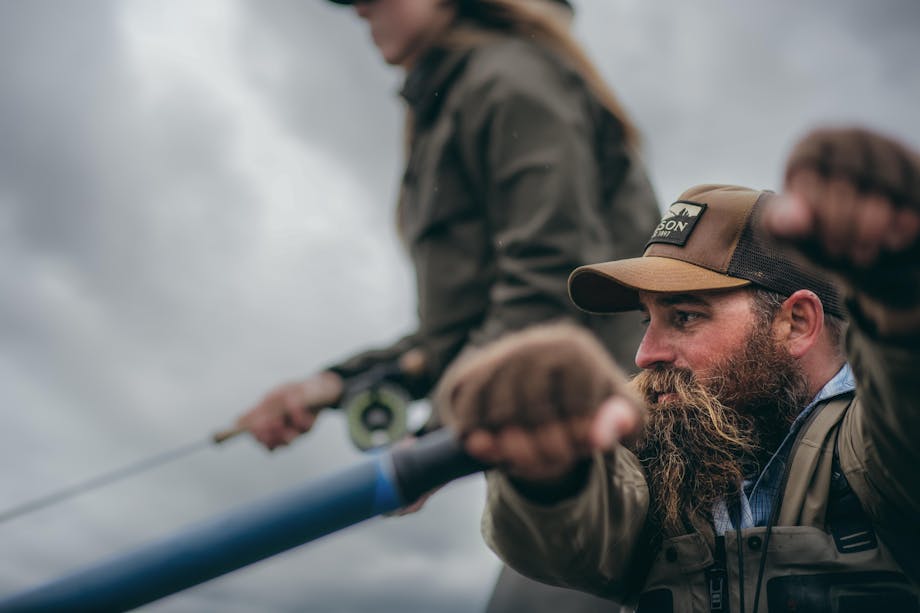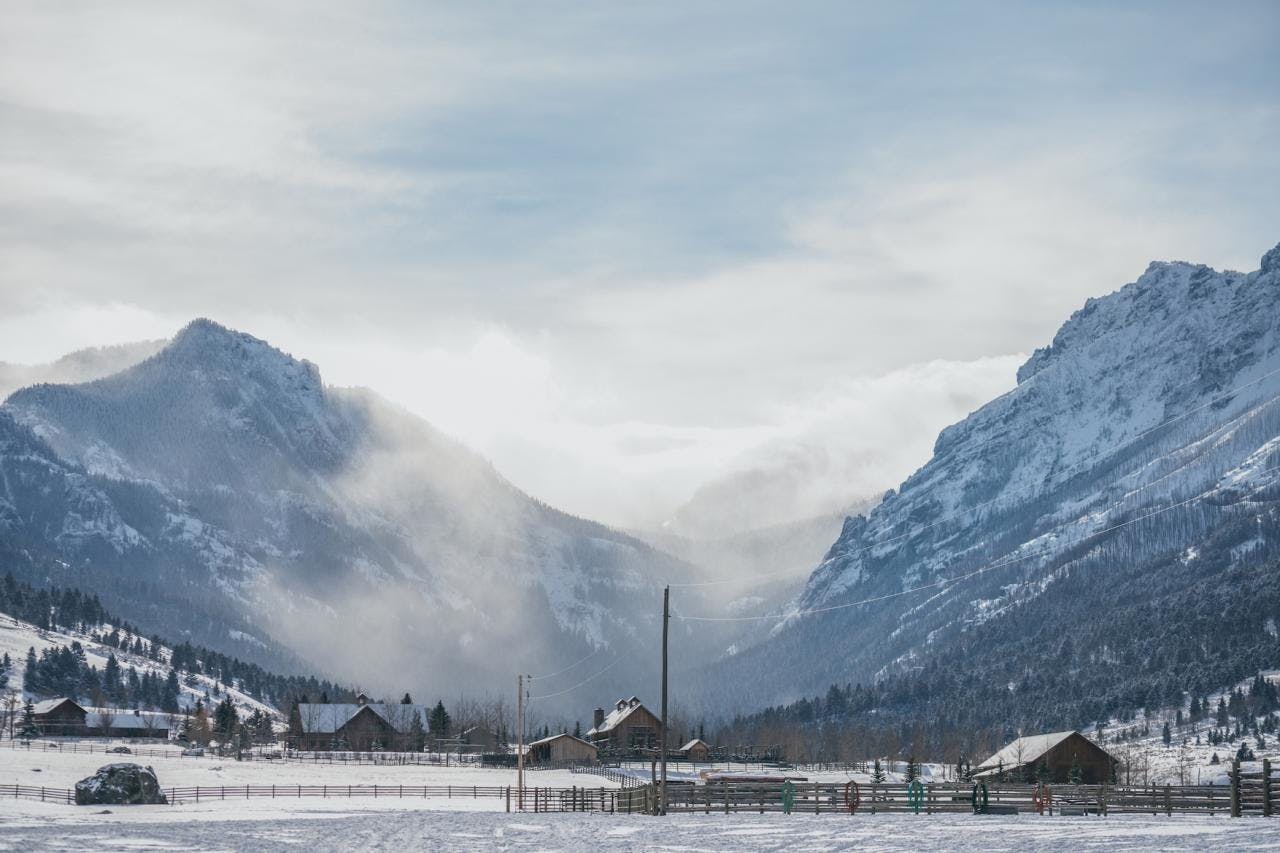
Four generations have lived here. The old schoolhouse stands where it has for nearly a century, a totem of those who came, laid roots, and grew families deep in the heart of the Greater Yellowstone basin. This place, in many ways, has retained a pulse of wildness that once poured across North America. This is Montana. Life is not easy or predictable here; daily existence and duty are guided by the ebb and flow of the seasons. Beyond the cabin windows lie mountain lions, bighorn sheep, mule deer, bald eagles, grizzly bears, wolves, elk and a few hundred motley head of cattle. Generations of life experience among the Andersons have fostered a work ethic that serves well those who have carved a life for themselves here.

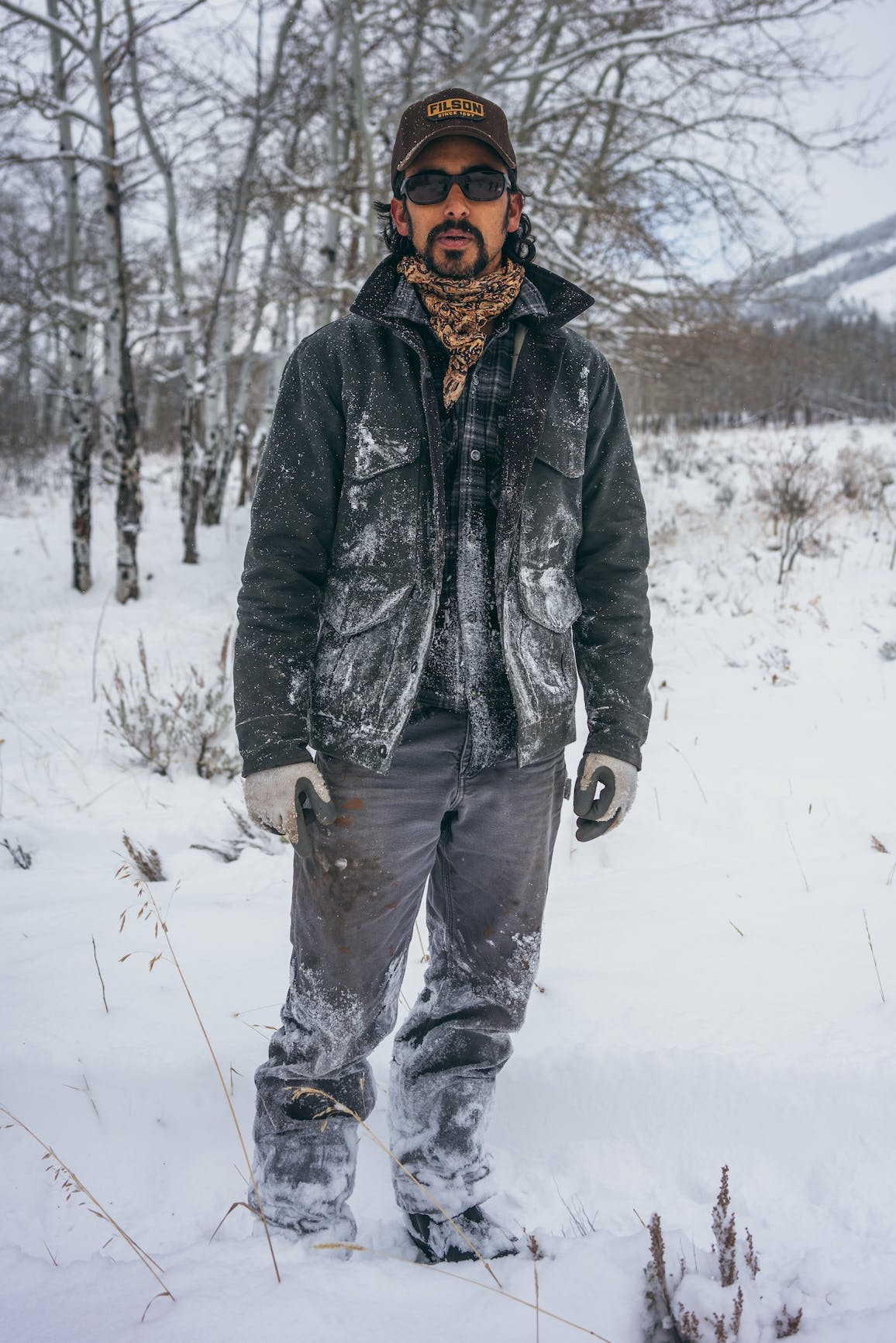
Aggie, the white great Pyrenees, sits atop a tall pile of snow, her eyes scanning the horizon, unwavering in her duty. It becomes clear that Aggie loves the Anderson family as much as the Andersons love the lands they steward. Their home is tucked away in a wild slice of the Greater Yellowstone basin. The site comprises a collection of cabins, an old barn, and the stone schoolhouse, once cut and laid by hand. A smattering of dog tracks litter the snow, radiating from their respective kennels and hideouts. If you look closely you’ll see boot tracks too, some tiny and others large. The big boot tracks usually lie in front of the little prints, guiding the smallest of the Andersons; they come from the shoes of parents and grandparents as the up-and-coming fourth-generation keepers of this land.
Spend a day at the Anderson Family Ranch in Yellowstone’s Tom Miner Basin and you’ll find it truly takes a family effort to survive here. Everyone chips in. With temperatures sliding into the single digits, old aspens pulled by gloved hand, chain, and tractor are the tools and ticket to warmth in the winter. Cut to size, these timbers warm the Andersons three times: from forest to saw, saw to stove, and stove to warmed hands.

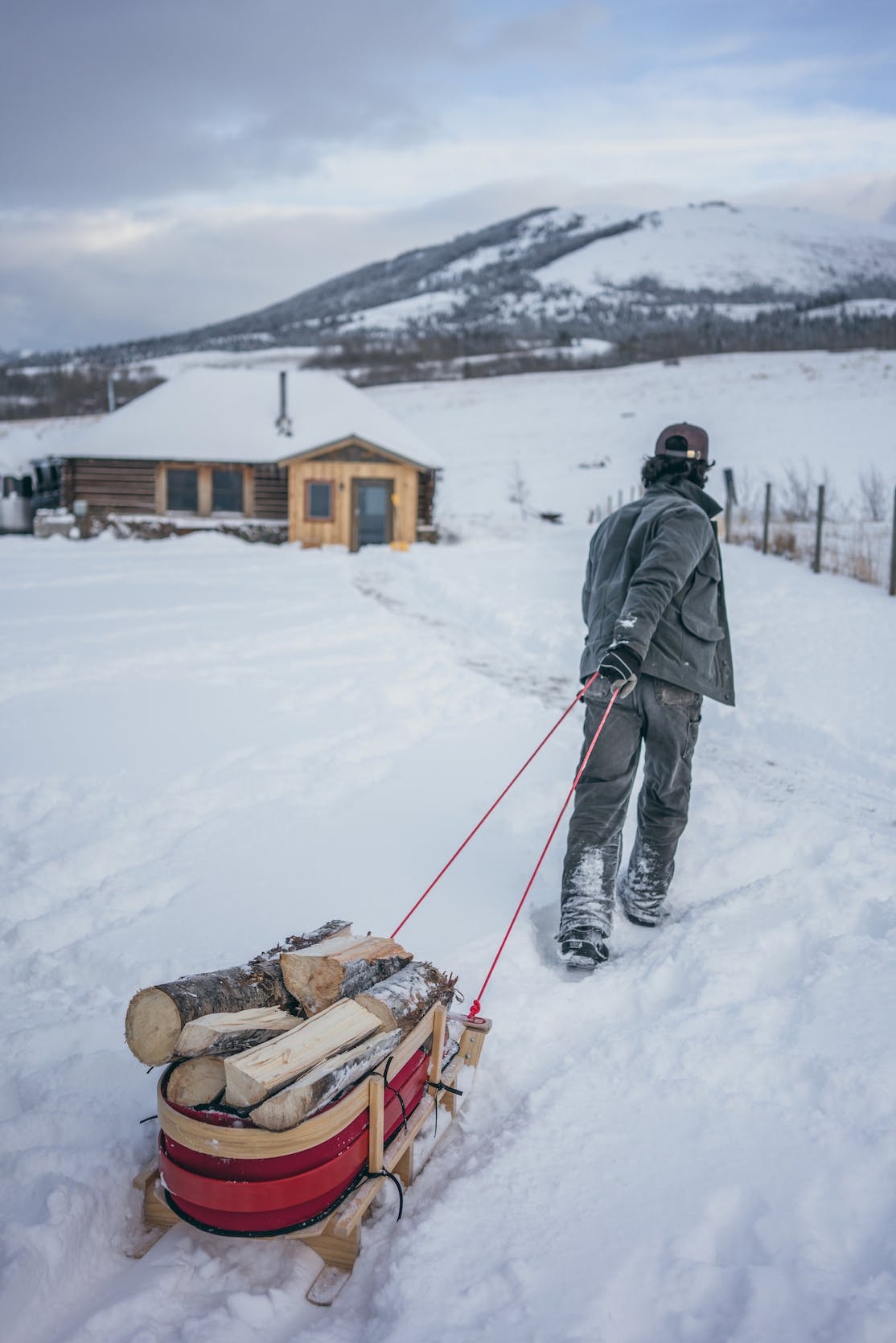
Julie Anderson, grandmother to a growing third-generation Tom Miner ranching family, looks out the window of her kitchen towards the birdfeeder adorned with finches and chickadees. Beyond the birds, her daughter Malou and her husband Dre load a red sleigh with dry wood destined for their cabin just downslope of the big house. Beyond the woodpile and old barn, a long steel gate contains the Andersons’ horses. They stand between 14 and 19 hands tall, each with a job suited for their build and personality. Some pull sleighs while others carry riders deep into the wilderness. Their quiet eyes lock onto the ATV that carries their breakfast: a bale of dark-green alfalfa, a meal much preferred to digging with hoof and nose for tired grasses buried beneath the growing blanket of snow.
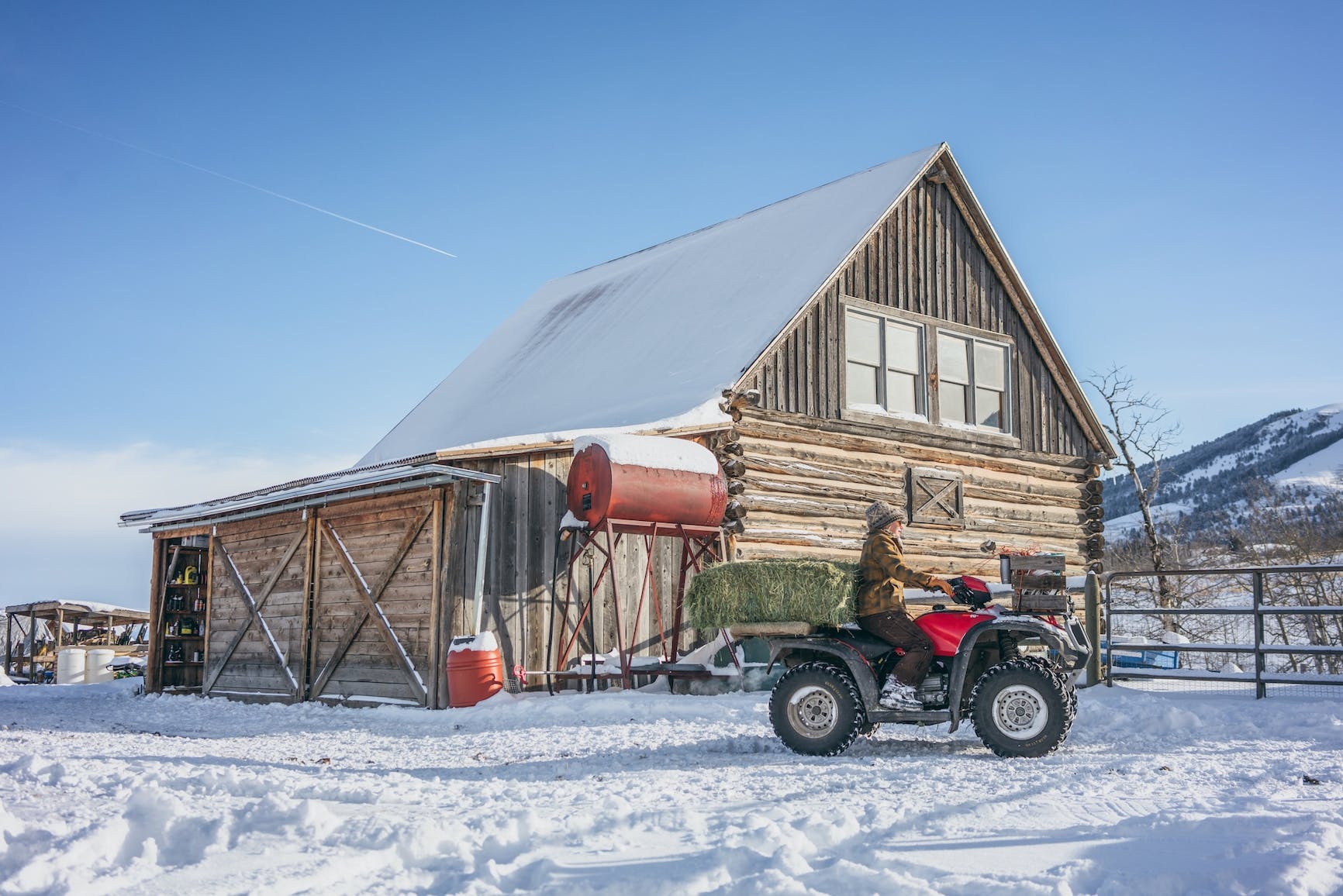
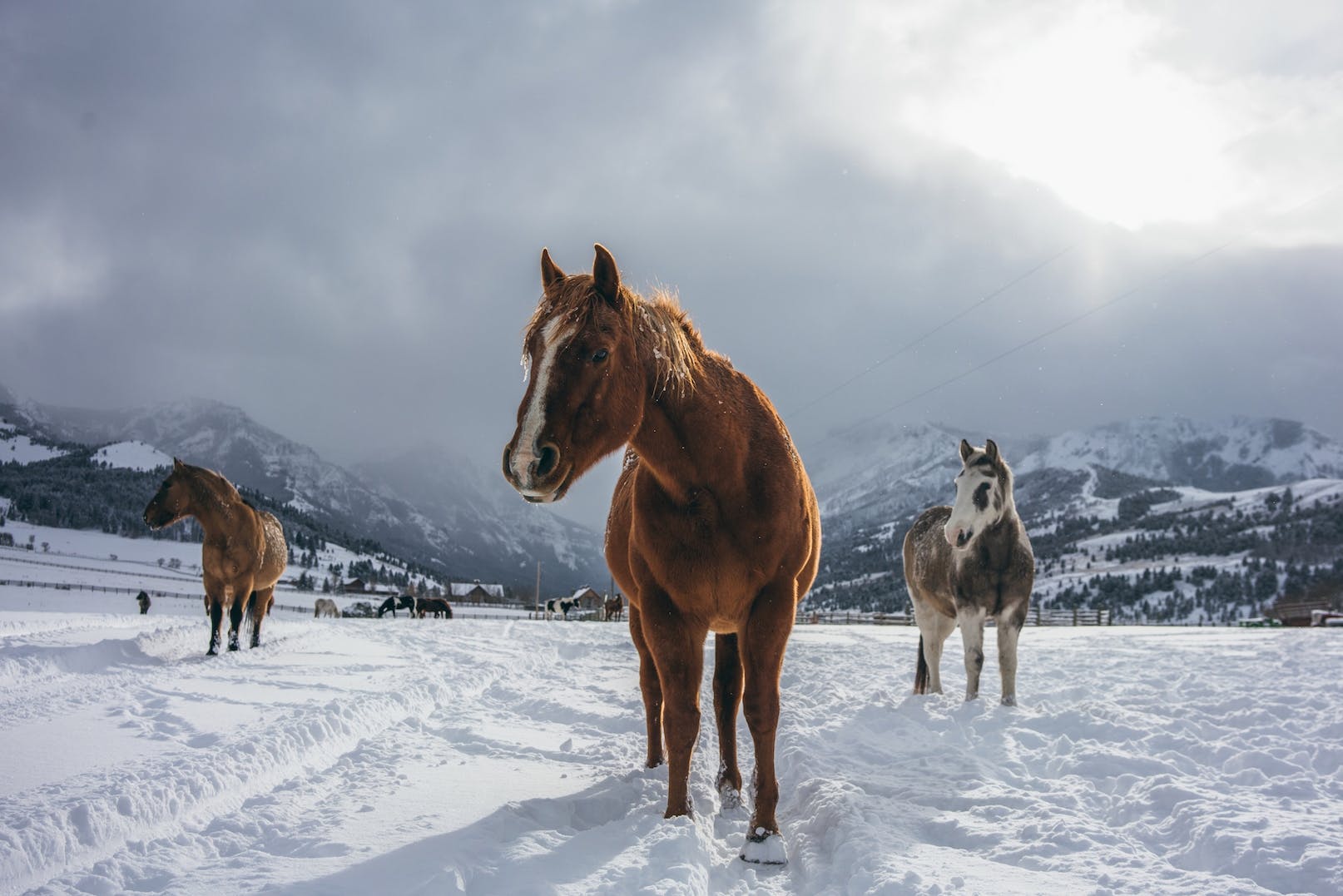
Their horses are used for range riding. It’s a way to leverage the innate power of human presence to deter would- or could-be predators from the Anderson cattle that graze these slopes. It is a non-lethal approach to living with apex predators, one that has slowly inspired a conversation that is helping shape the way ranchers coexist with wolves and bears in these parts. Malou and her sister-in-law, Hillary Anderson, lead by example, showing their neighbors that one can live in harmony with the wild ecosystem out the front door. Instead of shooting wolves and bears, they’ve found a range rider’s presence on horseback often does the trick.
These animals remain critical players in the ecosystem, and the Andersons can continue to raise and graze cattle on their family ranch. It is the commitment to live with nature as opposed to against it that defines the Andersons’ way of life. They are truly a cog on the broader wheel of stewardship that defines the rhythms of coexistence in Yellowstone’s Tom Miner Basin.
Story and photography by Charles Post
Follow Charles on Instagram
